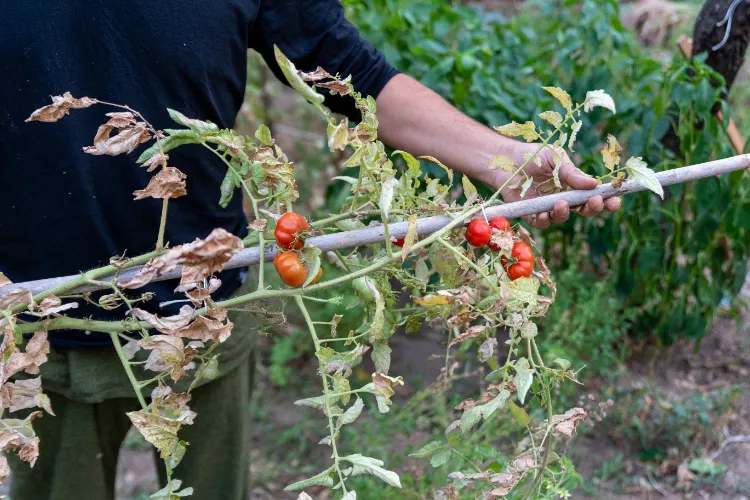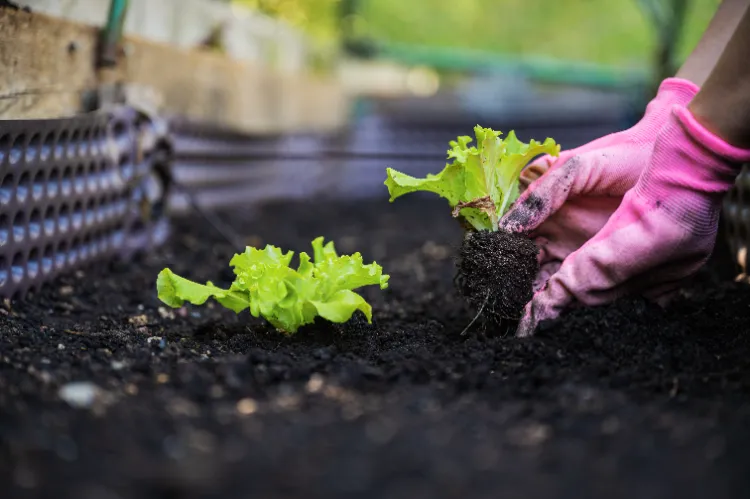What to plant after tomatoes in fall? What vegetable should you not plant near tomatoes? Why sow green manure in October? Find out how to rotate crops in the vegetable garden with our practical guide.
Is It Necessary to Remove Tomato Plants in Fall?
Yes, it is absolutely necessary. When the stems start to dry and turn brown and you harvest the last of the fruit, you need to pull them out. Tomatoes are plants susceptible to pests. If you leave them in the garden all fall and winter, you risk multiplying them and facing an invasion next year.
Additionally, if you clear your garden of dry plants, you will have more room for fall crops, especially if you live in warmer regions or have grown your tomatoes in a greenhouse.
Also read: Can You Plant Grass Seeds in October? Our Guide + Gardener Tips on How to Do That
What to Plant after Tomatoes in Fall?
Planning is a very important step in garden work that will ensure you have a good harvest and drastically minimize pests and diseases. So, once you’ve cleared your garden from summer vegetables, like tomatoes, take a sheet of paper and mark out which plants to sow in their place. One of the most important things to consider in this case is that tomatoes are very nutrient hungry and by fall the soil is usually exhausted. They reduce soil pH through secretions from their roots, and at the same time remove potassium, nitrogen and calcium from the soil. This makes it one of the plants with the largest carbon footprint. What to plant in this case to neutralize the negative effect of tomatoes on the environment? What are the species that don’t need a lot of care and nutrients to grow?
What to Plant after Tomatoes in a Greenhouse?
If your tomatoes were planted in a greenhouse, you can replace them with other vegetables. Here are the best of them:
- Lamb’s lettuce – Lamb’s lettuce grows in the fall and is a great crop to plant in the greenhouse after removing summer vegetables. It is very resistant to pests and will not be affected by those that remain after the tomatoes.
- Garlic – This is a great companion plant for tomatoes, so you can plant it after you’ve uprooted them. It likes slightly acidic soils, which is another reason to cultivate it.
- Onion – Onion is resistant to tomato pests. So consider planting it in your greenhouse as well.
- Peas & Beans – These crops will help return nitrogen to the soil when planted after tomatoes.
Also read: Plant Winter Onions in the Fall: Instructions for Proper Cultivation in the Garden and in Containers
What to Plant after Tomatoes in the Garden?
If your tomatoes were planted in the ground, the only plants you can sow there are green manures. These include white clover, oats and rye. These species provide nutrients for future crops. Here are all their advantages:
- White Clover – White clover lives in symbiosis with bacteria and together they have the ability to store extra nitrogen from the atmosphere and release it into the soil, making it available to plants.
- Oats – This crop prevents soil erosion and reduces the release of carbon from the soil. As a ground cover, it makes an excellent mulch in winter.
- Rye – Rye has the ability to absorb excess nitrate and phosphorus from the soil. Therefore, it reduces the risk of runoff and leaching during winter. In addition, it grows quickly and thus slows down the growth of weeds in the garden.
What Vegetable Should You Not Plant Near Tomatoes?
There are other plants that can be grown in fall, but they are not suitable for crop rotation after tomatoes. For example, artichokes are nutrient-demanding plants, so it is not a good idea to place them in one place.
As you may suggest, all other vegetables and plants in the Solanaceae family should be avoided. They have the same nutrient needs. These are eggplants, potatoes and peppers. They also suffer from the same diseases as tomatoes.
Also read: When to Plant Flower Bulbs? How to Do It Right in Beds and Flower Pots?





